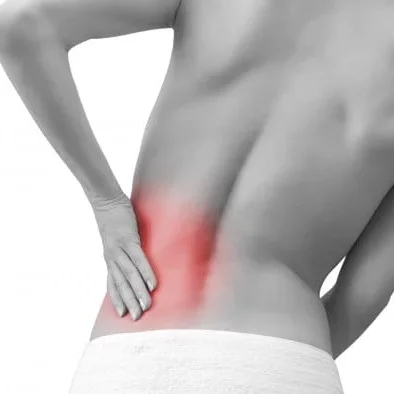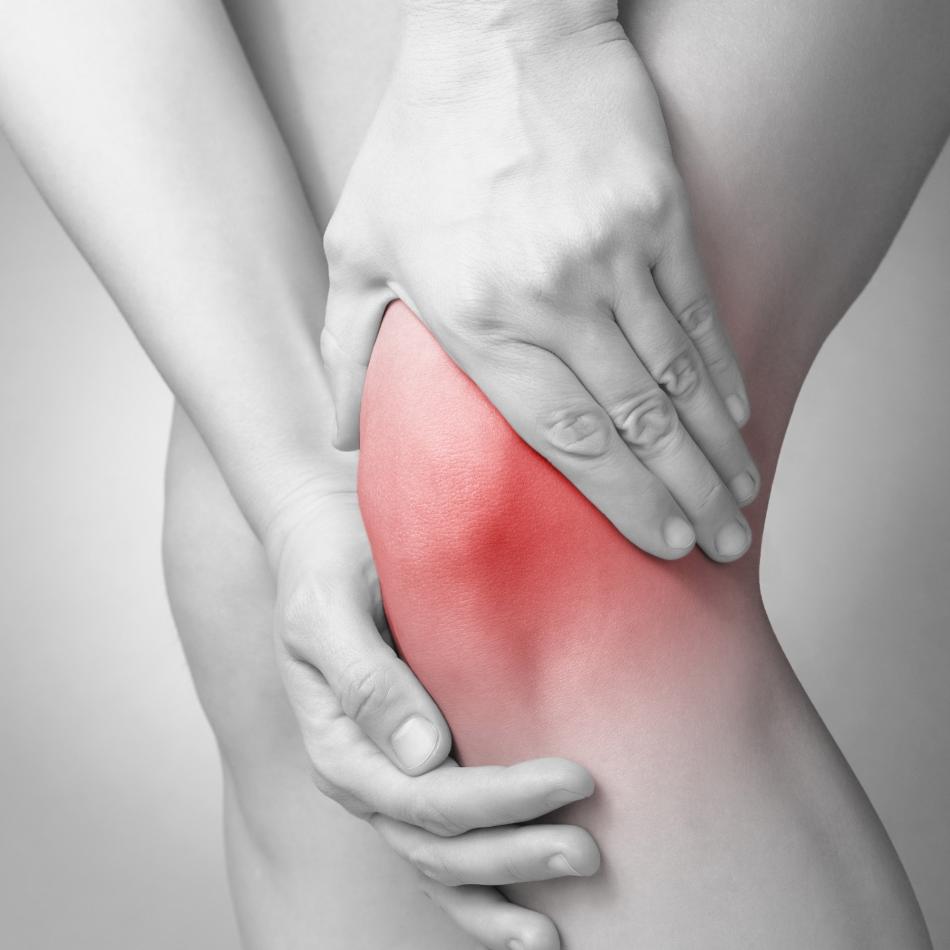Hyaluronic acid (HA -Viscosupplement) is a substance similar to synovial fluid, which occurs naturally in joints and acts to lubricate and protect against shock and stress. HA is commonly used for conditions such as knee and hip arthritis, in order to reduce pain, improve function and facilitate rehabilitation.

Foot & Ankle

Shoulder

Hand & Wrist

Elbow

Hip

Knee
Treatment Solutions
Prolotherapy
Prolotherapy involves the use of concentrated glucose, usually diluted with local anaesthetic, which acts as an irritant solution. This solution creates a local inflammatory response and can be used to treat ligament laxity and can help to stabilise joints.
Hydrodilatation
Hydrodilatation refers to a procedure where a relatively large volume of fluid is injected into a joint, as a way of mechanically stretching the tissue to improve the range of movement. This procedure is used almost exclusively for the marked restriction seen with frozen shoulder (adhesive capsulitis) and can be an effective way of allowing the patient to regain range of movement while also significantly reducing pain
• Fees Single site (W9050): £430
• Fees Two site : £530
Steroid
Steroid injections are used to reduce inflammation and the pain associated with it. They have widespread use in the treatment of osteoarthritis but have limitations and recent evidence has resulted in clinicians using steroids more cautiously for certain conditions, i.e. tennis elbow/plantar fasciitis. Steroid injections can be helpful as a temporising measure to reduce pain in order to facilitate rehabilitation but can also effectively treat certain issues such as frozen shoulder (Adhesive capsulitis) and wrist tendon sheath inflammation (De Quervain’s Tenosynovitis).
• Fees Single site (W9030): £320
• Fees Two site : £430
High Volume Injection (HVI)
A High Volume Injection can be used to treat tendinitis/tendinopathy of the large lower limb tendons (Patellar and Achilles). The procedure involves infiltration of fluid into the interface between the tendon (Achilles or Patellar tendon) and the adjacent fat pad. This is thought to disrupt the ingrowth of blood vessels/nerves seen in tendinopathy and therefore have an effect on pain and local sensitivity.
• Fees Single site (W9050): £430
• Fees Two site : £530

Dr. Naeem Ahmed: Musculoskeletal Radiology Consultant
Dr Naeem Ahmed (BEM FRCR FRCP) graduated from Guy’s, King’s and St Thomas’ Hospital with the St Thomas’ Hospital Cup (George Leach Trophy) graduation prize. He completed academic foundation training at King’s College Hospital before completing radiology training at St George’s Hospital, Royal Marsden Hospital, Great Ormond Street Hospital, and Royal Brompton Hospital before completing a subspecialty musculoskeletal imaging Fellowship at Chelsea and Westminster NHS Foundation Trust where he was appointed Consultant Radiologist. Naeem has completed international clinical visitations at Massachusetts General Hospital (US), University Hospital Zurich and FIFA Medical Centre of Excellence Aspetar. He has over 50 publications and presentations, a postgraduate qualification in medical education, and won the British Medical Association Young Authors Award in 2017. He was awarded Medallist of the Order of the British Empire for services to volunteering and healthcare in the Queen’s Birthday Honours in 2019.
Shoulder Pain
- Frozen shoulder – Hydrodilatation
- Sub-acromial pain syndrome (“impingement”)
- Acromio-clavicular joint (ACJ) arthritis/inflammation
- Shoulder arthritis
* Price will be depending of the treatment and injection product. From £320
Knee Pain
- Knee arthritis/inflammation
- Baker’s cyst
- High Volume Injection (HVI) – Patellar tendinopathy
- Fat pad impingement
* Price will be depending of the treatment and injection product. From £320
Hip Pain
- Hip arthritis/inflammation
- Trochanteric bursitis (Greater Trochanteric Pain Syndrome)
- High hamstring tendinopathy
* Price will be depending of the treatment and injection product. From £320
Elbow Pain
- Tennis elbow (caution with steroid use)
- Golfer’s elbow (caution with steroid use)
- Elbow nerve entrapment – “cubital tunnel syndrome” & radial nerve hypersensitivity conditions
- Triceps & Biceps tendinopathy
* Price will be depending of the treatment and injection product. From £320
Wrist & Hand Pain
- De Quervain’s Tenosynovitis (thumb-sided wrist pain)
- ECU Tenosynovitis (little finger sided tendon pain)
- Small joint arthritis – 1st CMC joint (base of the thumb)
- Trigger finger / Carpal tunnel syndrome
- Wrist ganglion
- Distal Radio-Ulnar Joint (DRUJ)
* Price will be depending of the treatment and injection product. From £320
Foot & Ankle Pain
- High Volume Injection (HVI) –
Achilles tendinopathy - Ankle arthritis/impingement
- Plantar fasciitis (caution with steroid use)
- Morton’s neuroma/intermetatarsal bursitis
- Midfoot/Forefoot arthritis
- Sesamoiditis
* Price will be depending of the treatment and injection product. From £320
Do you have any questions ?
Who Can Have Ultrasound Guided Pain Relief Injections?
Most people can have steroid injections. However, a clinician should always be consulted before treatment and you should inform them if you have experienced any of the following:
• Had a steroid injection in the last few weeks. You usually need to wait 6 weeks between injections
• Have had an allergic reaction to local anaesthetic previously
• Have an infection or soon to have any vaccinations
• Are pregnant, breast feeding or trying to fall pregnant
• Have any other pre-existing conditions
• Are taking any other forms of medication
• Taking warfarin or other blood thinning medication
What is the benefit of having an ultrasound guided steroid injection (vs. a non-guided injection)?
Ultrasound is very useful to assess the joints, tendons and ligaments for any suspected injury or inflammation. In addition, it allows for direct visualisation of the needle to ensure the steroid medication is injected into the exact targeted site.
There is a significant evidence that ultrasound guided injections provide better levels of pain relief and longer effects compared with injections done without imaging guidance. This is because ultrasound guidance allows for accurate placement of the needle and thus delivery of the medicine to the exact site of pathology. Performing the injection under ultrasound guidance allows for visualisation of the adjacent structures and reduces the risk of tissues injury at the injection site.
What does the procedure involve?
An ultrasound-guided injection is a quick, minimally invasive procedure that takes about 15-30 minutes. As local anaesthetic is used, you will be awake during the procedure but you will feel no pain.
You will be allowed to go home straight after the procedure.You will not be able to drive after the procedure for safety reasons, so you will have to make transport arrangements.
The local anaesthetic will be in effect for 4-6 hours so you may feel numbness in the treated area during that time. We advise you to rest for 24-48 hours after the procedure. You should benefit from the full effect of the steroids within 10 days.
In rare cases, you may experience pain in the short term, following the image-guided injection. You can use over-the-counter pain relief to manage this but if you have any concerns, please get in touch with the Midland Health medical team for advice.
How quickly does it take for a steroid injection to start working?
A steroid injection usually takes a few days to start working, although some evidence suggests it can start working after a few hours.
What is an ultrasound-guided injection?
Ultrasound-guided injections use dynamic musculoskeletal ultrasound imaging to follow the movement of the needle inside your body and guide it to the correct location. This improves the accuracy of the procedure and makes it safer.
Ultrasound machines use a transducer (small hand-held device) to send high-frequency sound waves to the affected area. Echoing sounds are transmitted back to the transducer which then sends them to a computer for processing. Based on the information, an image of the target area is visualised in real time.
In the context of injections, the sound waves are directed towards the needle to display a dynamic image of the needle tip as it moves towards the target area.
What are the advantages of ultrasound guided injections?
There is a significant body of research which demonstrates that ultrasound guided injections give better outcomes such as improved levels of pain relief, longer lasting benefits, and improve the post-injection function of the injected area, compared with injections that are done without ultrasound guidance ( e.g.blind/surface marked injections). There is also growing evidence that guiding the injection reduces the risk of trauma to local tissues or misplacement of the needle and/or the injection substance. This improves the safety of the injection and reduces the risk of adverse events associated with injection therapy. Because the location of the injection is more precisely known it reduces the chances of having unnecessary injections. Many patients find ultrasound guided injections to be more comfortable as often the required depth of the injection can be reduced
Which body parts are you able to inject?
Steroid injection can be very effective for an number of musculoskeletal pain conditions. For a more comprehensive see list below. Common injections include frozen shoulder, carpal tunnel syndrome, osteoarthritis of the knee, trigger finger / thumb, osteoarthritis of any joint around foot or hand, localised soft tissue inflammation or tenosynovitis, such as de Quervains or tendon inflammation at the shoulder. We also provide a range of Ostenil and Durolane (hyaluronic acid) injections which can be very beneficial to patients with degenerative joint pain (such as osteoarthritis) who are keen to keep moving and active.
What are the possible side effects from a steroid injection?
Most people have intra articular steroid injections without any significant side effects.
Possible side effects from an intra articular steroid injection include:
-
Pain and discomfort for a few days. This is sometimes referred to as a steroid flare. Simple pain killers like paracetamol can help with this.
-
Temporary bruising due to small blood collection under the skin at the site of injection
-
Infection. This is very rare but important to be aware of. It is reported to happen in less than 1 in 10000 of cases. The symptoms of infection are pain, swelling and redness at the site of injection. Sometimes patient may also have a fever. Get medical advice as soon as possible if you have these symptoms.
-
Injury to structures close to the injection site. This is rare with ultrasound guidance.
-
Local thinning of the fat at the injection site. This can cause dimples in the skin and can be permanent.
-
Local change in colour (usually lightening) of the skin at the injection site. This can be permanent.
-
if you have diabetes, your blood sugar level may temporarily increase.
-
If you have high blood pressure, your blood pressure may temporarily increase.
-
Temporary facial flushing.
-
Other side effects like mood changes, increased appetite, difficulty in sleeping and menstrual disturbance are very rare with intra articular injections and more associated when the steroids are taken as tablets, injected into the muscle (intra muscular) or into the blood (intravenous).
How many steroid injections can I have?
You should discuss this with your doctor but repeated steroid injections can increase the risk of the side effects. There is also some concern that repeated intra articular steroid injection might cause damage to the cartilage. Therefore, steroid injections are usually not performed more than 3-4 times a year into the same body part.
How safe is an ultrasound-guided steroid injection?
It is a very safe procedure. All radiologists working for Prime Health are experienced, FRCR accredited clinicians and work within a sub-speciality area of interest.
In line with World Health Organisation guidelines, additional safety policies have been introduced by Prime Health and our clinicians must now consider any risks posed by COVID-19. You will be asked to complete a questionnaire and the healthcare professional will need to determine that the benefits of the steroid injection, especially if you are over 70 70 or with co-morbidities, outweigh any risk of infection.
I have health insurance, will this cover my scan/treatment?
Currently, we are primarily a self paid service. We are continuously liaising with the various health insurance providers and we will update this section accordingly.
